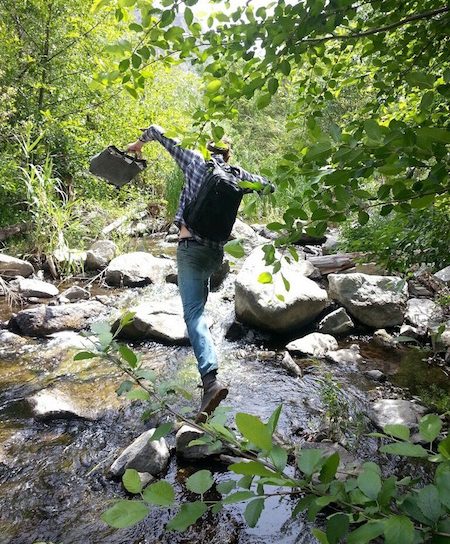
The Pet Shrink
Part therapist, part trainer, animal behaviorist Michael Steinberg has
been getting into the minds of cats and dogs for more than 30 years.
-
CategoryPeople
24 VENTURA BLVD, JULY 2016 ourventurablvd.com
ourventurablvd.com JULY 2016, VENTURA BLVD 25
So what are the most common problems you get a call for?
Separation anxiety, especially exhibited by newly adopted dogs. This can range from destructive behavior, barking incessantly to eliminating in the house. Second would be aggressive behavior toward people or other dogs. And third, housebreaking issues.
Many of us treat our dogs like humans. Is that bad?
Humans function best in a predictable and stable environment. Dogs thrive in an environment that is relatively predictable which includes consistent expectations. A behavior can’t be OK one minute and then not OK 10 minutes later. Simple example: it’s OK for your dog to jump on you but then expect them not to jump on guests. Treating your pet as a toy with no consistency is one of the worst things a pet owner can do.
How important is walking a dog?
Exercise is important. The more an owner can walk their dog or otherwise provide other forms of physical or mental stimulation—doggie day care, agility training, hiking—the better.
How much outside time does a dog need?
Obviously, having to leave a dog alone eight or more hours a day is not good. This is especially true for puppies and young dogs. An older dog that has been raised this way can, in some cases, tolerate long absences. I suggest breaking up the day with dog day care, dog walkers or trusted friends.
What are the most common mistakes pet owners make?
Lack of consistency and family members not being on the same page—much like many of us do with our children. Something may not be OK with mom but OK with dad. Not good!
What is the appropriate way to punish a pet?
Use of positive reinforcement to teach appropriate behavior is the ideal, but life isn’t all positive reinforcement. Some behaviors need to be corrected by some form of negative reinforcement or punishment (except physical). Every dog responds differently to correction. The least aversive, if necessary, should always be the first choice.
Our dog Cal used to walk quietly on a leash. That all changed when we got a second dog, Bo. Now Cal starts barking like crazy when he sees another dog. Then Bo starts barking and then Cal mauls Bo. Is Cal trying to be the “alpha?”
Not necessarily. It could be what’s called “redirected aggression.” Since Cal can’t get to the dog he sees, he redirects his frustration (aggression) to Bo. This is a major reason not to use a yoked leash where both dogs are attached to one leash. In some instances the dog will redirect the aggression to the owner.
What are the signs of a happy dog?
Rear end moving back and forth, rear body raised and front lowered (play posture), mouth open with a sort of smile. You know it when you see it because it makes you smile.
Signs of an unhappy dog?
Head down, tail tucked, body lowered or on side or back, and avoidance of eye contact.
Do dogs like to be around other dogs? Or is being with humans enough?
Most dogs enjoy both other dogs and people. Although we all know those that don’t do well with other dogs for various reasons i.e., not socialized at a young age or having been attacked by another dog. Being around both is best, but a lot of dogs just enjoy their human











